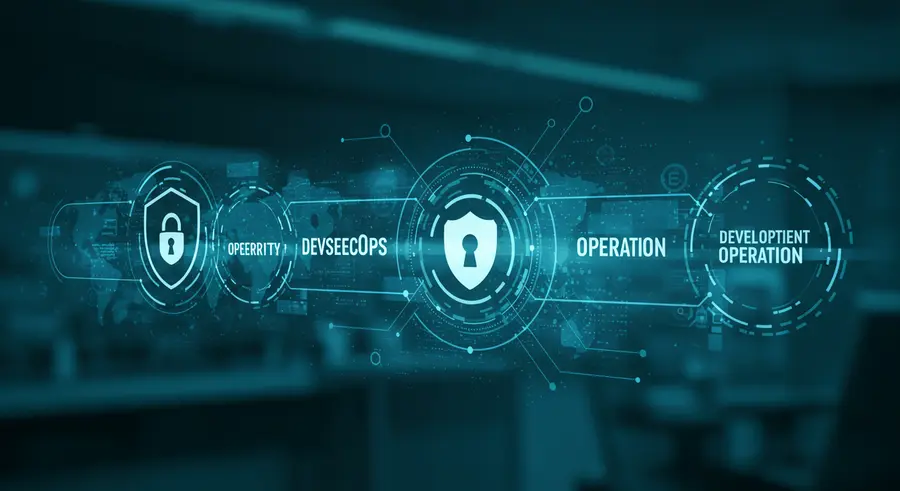Integrating DevSecOps into Your Platform Engineering Strategy

In the modern software development lifecycle, speed and agility are paramount. However, this pursuit of velocity cannot come at the expense of security. This is where DevSecOps principles become crucial, especially when building and managing Internal Developer Platforms (IDPs) through Platform Engineering. Integrating security seamlessly into the developer workflow is no longer a luxury but a necessity.
What is DevSecOps?
DevSecOps stands for Development, Security, and Operations. It's an augmentation of DevOps that aims to embed security practices and tooling throughout the entire software development lifecycle (SDLC). The core idea is to "shift left" – to move security considerations to the earliest stages of development, rather than treating security as an afterthought or a final gate before release. This proactive approach helps in identifying and mitigating vulnerabilities early, reducing the cost and complexity of fixes, and fostering a culture of security responsibility across all teams.
Why DevSecOps Matters in Platform Engineering
Platform Engineering focuses on providing developers with self-service capabilities, standardized tools, and automated infrastructure. Without a strong DevSecOps foundation, an IDP could inadvertently become a source of security risks. Here's why integrating DevSecOps is vital:
- Automated Security Guardrails: An IDP can enforce security policies and best practices automatically. By embedding security tools (SAST, DAST, IAST, SCA) into CI/CD pipelines managed by the platform, developers get immediate feedback on security issues in their code and configurations.
- Standardized Secure Components: The platform can offer pre-configured, hardened, and approved components (e.g., base container images, infrastructure modules, API gateways) that have security built-in. This reduces the chances of developers introducing vulnerabilities through misconfigurations.
- Consistent Security Posture: By centralizing security controls and monitoring within the platform, organizations can ensure a consistent security posture across all applications and services deployed through it.
- Empowering Developers with Security: DevSecOps in an IDP context isn't about restricting developers; it's about empowering them with the tools and knowledge to build secure applications. This includes providing clear guidance, actionable feedback, and easy-to-use security services.
- Reduced Friction: When security is integrated into the developer workflow via the platform, it becomes less of a bottleneck. Automated checks and balances mean security doesn't slow down development velocity but rather enables safer, faster releases.
Key Strategies for Integrating DevSecOps into Your IDP

Image depicting the stages of a DevSecOps lifecycle, emphasizing continuous integration of security.
1. Secure by Design Principles
Embed security into the very architecture of your IDP. This includes secure defaults for all platform services, role-based access control (RBAC) with least privilege, and encrypted communications throughout the platform.
2. Automate Security in CI/CD Pipelines
Integrate a suite of security testing tools directly into the CI/CD pipelines offered by the platform. This should include:
- Static Application Security Testing (SAST): Analyzes source code for vulnerabilities before compilation.
- Dynamic Application Security Testing (DAST): Tests running applications for vulnerabilities.
- Software Composition Analysis (SCA): Identifies vulnerabilities in open-source dependencies.
- Container Image Scanning: Scans container images for known vulnerabilities.
- Infrastructure as Code (IaC) Scanning: Validates security configurations in Terraform, CloudFormation, or similar templates.
3. Centralized Secrets Management
Provide a secure and easy-to-use secrets management solution as part of the platform. This prevents developers from hardcoding secrets and ensures that access to sensitive information is tightly controlled and auditable.
4. Continuous Monitoring and Threat Detection
Implement comprehensive monitoring and logging across the platform and the applications it hosts. Utilize tools for intrusion detection, anomaly detection, and security information and event management (SIEM) to identify and respond to threats in real-time.
5. Policy as Code
Define security and compliance policies as code (e.g., using Open Policy Agent - OPA). This allows policies to be versioned, tested, and automatically enforced by the platform, ensuring consistency and auditability. For more information on Policy as Code, you can visit the Open Policy Agent website.
6. Developer Training and Awareness
While the platform can automate many security aspects, a security-conscious culture is paramount. Provide developers with training on secure coding practices, common vulnerabilities, and how to use the security tools provided by the platform effectively.
The Benefits of a DevSecOps-Enabled Platform
Integrating DevSecOps into your platform engineering efforts yields significant benefits:
- Faster, More Secure Releases: Automation reduces manual security reviews and allows teams to release features more frequently with higher confidence in their security.
- Reduced Risk: Proactive identification and remediation of vulnerabilities minimize the attack surface and the likelihood of security breaches.
- Lower Remediation Costs: Finding and fixing security issues early in the development cycle is significantly cheaper than addressing them post-production.
- Improved Developer Productivity: By abstracting security complexities and providing self-service security tools, developers can focus on building features without being security experts themselves.
- Enhanced Compliance: Automated policy enforcement and comprehensive audit trails simplify adherence to regulatory and compliance requirements.
Conclusion
Platform Engineering and DevSecOps are natural allies. A well-designed Internal Developer Platform should have security woven into its fabric, providing developers with a "golden path" that is not only efficient but also inherently secure. By embracing DevSecOps principles, organizations can transform their IDPs into powerful enablers of secure, high-velocity software delivery, fostering innovation while safeguarding their valuable assets.
Back to Home